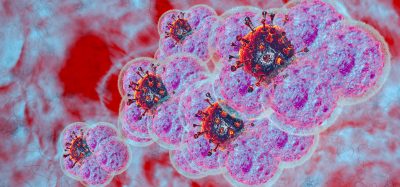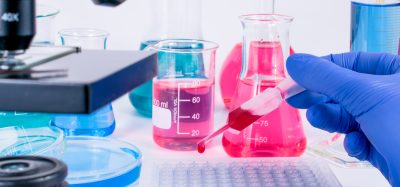Rare Diseases Q&A
Posted: 16 June 2016 | Caroline Richards (Drug Target Review) | No comments yet
Releasing colourful balloons into the air to symbolise people who are affected by rare diseases was one of the many ways in which this year’s Rare Disease Day was marked in February. The once-yearly, global campaign aims to raise awareness among the general public and decision-makers about these illnesses and how they impact on patients’ lives. With pressure mounting on pharmaceutical companies to accelerate innovation in rare disease drugs, Caroline Richards, Editor of Drug Target Review, interviewed Martin Mackay, Head of R&D at Alexion Pharmaceuticals, to find out more about the opportunities and challenges the pharmaceutical industry faces in developing these much-needed treatments…

Why has there recently been a surge in attention for rare diseases?
Worldwide, around 7% of the global population will be affected by a rare disease at some point in their lives, which equates to approximately 3.5 million people in the United Kingdom, most of whom (75%) are children, and 30% of whom will die before their fifth birthday. Of the approximately 6,000-8,000 identified rare diseases in the world, there is a significant unmet need, with only 5% of patients currently able to be treated. With these statistics in mind, we can only be pleased that companies are diversifying their portfolios to include these diseases as they work towards finding new treatments.
The recognition that more needs to be done to advance innovation in rare diseases started with the Orphan Drug Act initiated in the United States in 1983. Europe followed suit with the European Regulation on Orphan Medicinal Products being introduced towards the end of 1999. These regulations have helped encourage investment in research and development for rare diseases. In addition, the rare disease patient advocacy community has also helped to raise greater awareness of these rare conditions, and has recently become more vocal and a stronger advocate of the need to improve the standard of care for patients.
Of the thousands of rare diseases, how do pharmaceutical companies decide which ones to focus on?
A disease being rare does not mean that those patients affected by it do not deserve life-transforming and innovative therapies. Each company will have its own unique strategy for which rare diseases it is focusing on. At Alexion, our mantra is a very simple one: “how bad/how good”. Firstly, we ask: “how bad” is the disease? At Alexion, we only work on truly devastating diseases. For the second question, on “how good” the treatment is, we only concentrate on treatments that are genuinely transformational rather than those that offer only a small incremental benefit to patients.
For example, we have a product that treats two ultra-rare diseases – paroxysmal nocturnal hemoglobinuria (PNH), where onset is usually in the early ‘30s and more than a third of patients die within five years – and atypical haemolytic uraemic syndrome (aHUS), which kills or leads to end-stage renal disease in up to 40% of patients. The product has been a breakthrough in medical innovation in complement inhibition and, in clinical studies, 100% of patients had a significant reduction in terminal complement activity. Our two newest products treat the ultra-rare diseases lysosomal acid lipase deficiency (LAL-D) and hypophosphatasia (HPP). As enzyme replacement therapies, they address the underlying cause of the disease by replacing the missing vital enzyme in these patients. Our pipeline also contains several more truly transformational therapies for truly devastating conditions.
As well as working relentlessly to develop breakthrough treatments for patients with devastating and rare diseases such as the ultra-rare diseases described above, our R&D team focuses on where we have scientific expertise or can build strong partnerships to deliver scientific innovation.
What are the challenges companies face in developing new treatments for such small numbers of patients?
Drug development carries a considerable amount of risk and this is heightened in rare diseases. In addition to the risk factor, there are many challenges of working on rare and ultra-rare diseases. Small patient populations mean that just gathering data presents unique challenges, and the rarity and complexity of these diseases means that sometimes we do not fully understand their causes. There is often also limited knowledge and understanding of the disease area even amongst the medical community. This means that simply diagnosing a rare disease can be an extremely difficult and a long journey for patients and their families. The types of symptoms that patients present with are often misdiagnosed as other more common conditions. Ultimately this impacts the ability to find patients for trials, and continues throughout the entire product lifecycle.
The limited knowledge and awareness of rare diseases typically means having to undertake natural history studies to better understand the course of the disease. Following or in parallel to these studies, the clinical study program needs to be designed, with in most cases no pre-defined clinical endpoints. In HPP, for instance, we were able to work with key opinion leaders, academics and regulators to determine the important endpoints for development trials that would reflect clinical benefit to the patients. Although survival was clearly a major primary endpoint, there were a number of other pieces in the puzzle of this disease that we had to work out.
Recruiting patients into the clinical studies is further challenged by the very small patient populations and, often, the severity of the disease. This typically means many trial sites are needed and there are often hurdles in physically getting the patients to the sites for treatment.
Once a drug is approved, ongoing education is needed to help raise awareness of rare diseases to ultimately improve diagnosis and disease management. And considerable work is needed with governments and payers around the world to ensure that patients have access to these new therapies. Another challenge is that country-by-country pricing and reimbursement appraisal processes, which must take place before patients can access therapies, are lengthy.
However, in spite of the enormous amount of risk and the considerable challenges to overcome, as a scientist, it is very rewarding to be able to develop treatments for devastating ultra-rare diseases where the patients and their carers have no hope whatsoever.
In terms of regulation, can you comment on both the barriers and the incentives for conducting R&D into drugs for rare diseases?
From a purely regulatory perspective, the main barrier in the R&D phase is the lack of clear understanding of the diseases we are working in. There is increased regulatory risk since there are not usually any regulatory precedents for a given rare disease, nor are there well-established road maps for regulatory approval. As a company, we always look to develop innovative treatment options for ultra-rare diseases where no current therapeutic option exists. Therefore, we have to partner closely with regulators and engage in ongoing dialogue throughout the development process.
In addition, after the R&D phase, there are challenges in the review of rare disease drugs for pricing and reimbursement purposes, which simply cannot be assessed based on traditional Health Technology Appraisal (HTA) models. It is widely accepted by health economists, HTA bodies and policy makers in many countries that traditional cost-effectiveness evaluations are not designed to effectively or fairly assess the value of a given therapy for a rare or ultra-rare disease. More needs to be done here to find innovative ways to assess treatments for such small patient populations.
With regards to incentives, various regulations have been implemented to incentivise R&D for rare diseases, such as increased market exclusivity once a drug is approved. Most recently, for example, the FDA developed a rare paediatric disease review voucher programme that is designed to encourage development of new drugs and biologics for the prevention or treatment of rare paediatric diseases. With the recent approvals of our enzyme replacement therapies, the FDA issued two Rare Paediatric Disease Priority Review Vouchers to Alexion – we are the only company to receive two vouchers to date. The vouchers confer priority review to a subsequent drug application that would not otherwise qualify for priority review.
Will collaboration between the pharma industry and academia increase in importance over the coming years?
While in-house expertise is critical, you cannot underestimate the importance of partnerships when working in rare diseases. Collaboration has always been a critical component of R&D for rare diseases and, as we explore more novel rare diseases, this will inevitably grow. And unique to rare disease R&D, these partnerships extend beyond just academia to also include key opinion leaders, patients/patient advocacy associations and regulators.
Related topics
Drug Development
Related organisations
Alexion Pharmaceuticals
Related people
Martin Mackay







